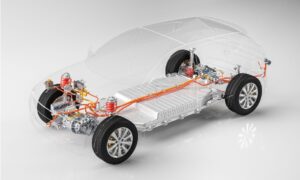The actual need, caused by the rising climate changes and pollutions, of a more sustainable way of living has initiated many debates within many sectors. Among these, the impact generated by the transport sector, and most in general by any type of vehicle utilization, results one of the main responsible for the emissions due to the fossil fuels usage. Recent decisions – as the one to stop and ban the production of fossil fuel and hybrid vehicles from 2035, result as a great springboard for the diffusion of electric vehicles into the market. They are more sustainable under many aspects but that aspect has to face the growth of hydrogen vehicle production, which technology is taking bigger and bigger steps. It is important to understand the existing technical and practical differences between the two technologies. While the first one depends totally from a proper lithium-ion battery that sustains the entire vehicle necessities, from the engine to the implemented devices, the hydrogen vehicle’s engine comes from the reaction between hydrogen and oxygen inside the fuel cell, as a result of which the electricity that feed the electrical motor, and the water vapor are.

Even if both are green and valid solutions, as declared by an article of the French group Renault, these new technologies present different problems. The potential and sustainability of hydrogen vehicles is higher than the electrical ones, thanks to the availability of the fuel (endless) and the production of water vapor as the only by-product of the reaction. Unfortunately, high costs of vehicles, scarcity of filling stations and inadequate infrastructures are curbing its spread. The logistic problem results in the principal break for the market of hydrogen.
For the electrical vehicles, which production is rising all over the world especially after the decisions of European Commission, the interest is higher. In many countries, especially in the Old Continent and the States; the infrastructure is rapidly evolving with the diffusion of charging stations. The issues linked to this technology are represented by the cost of vehicles, still very high because of the production costs and extraction of materials. For instance, lithium which is a main component of the battery that has to be treated (this processes produce high quantities of CO2) is not available all over the world but only in some specific places, the limited autonomy of batteries and high costs for their substitution or reparation is significantly increasing the cost. If the problem of infrastructures seems to be ready to disappear in many countries this technology will depend on the electricity market and its variations for its entire cycle of usage.
 The gap between the diffusion of these two technologies has been presented by an article of HydrogenInsight, showing the German case, more precisely of the region of Cologne, where 1617 electric buses are now present, against the only 145 that use hydrogen fueled. With the target of reducing emissions caused by the transport sector by another 40% up to 2030, the nation has planned to increase the number of hydrogen vehicles up to an estimated number of 917 units. As previously cited, because of the cheapest technology and the already present infrastructures, the electrical vehicles are expected to follow the same trend, reaching more than 7300 units by 2030. Despite the difficulty of the hydrogen application of emerging in the automotive sector at an affordable price the German region is ready to set up new investments for the development of hydrogen vehicles and the improvement of the infrastructure’s status.
The gap between the diffusion of these two technologies has been presented by an article of HydrogenInsight, showing the German case, more precisely of the region of Cologne, where 1617 electric buses are now present, against the only 145 that use hydrogen fueled. With the target of reducing emissions caused by the transport sector by another 40% up to 2030, the nation has planned to increase the number of hydrogen vehicles up to an estimated number of 917 units. As previously cited, because of the cheapest technology and the already present infrastructures, the electrical vehicles are expected to follow the same trend, reaching more than 7300 units by 2030. Despite the difficulty of the hydrogen application of emerging in the automotive sector at an affordable price the German region is ready to set up new investments for the development of hydrogen vehicles and the improvement of the infrastructure’s status.
In conclusion it can be confirmed that nowadays electrical vehicles are preferred over the hydrogen ones, but this latest technology shows a great potential, for the next decades, as one of the principal solution for the reduction of emissions and the consequent growth of our sustainability, in automotive sector and many others.
Text source: www.renaultgroup.com
Photo sources: www.which.co.uk, www.edmunds.com
